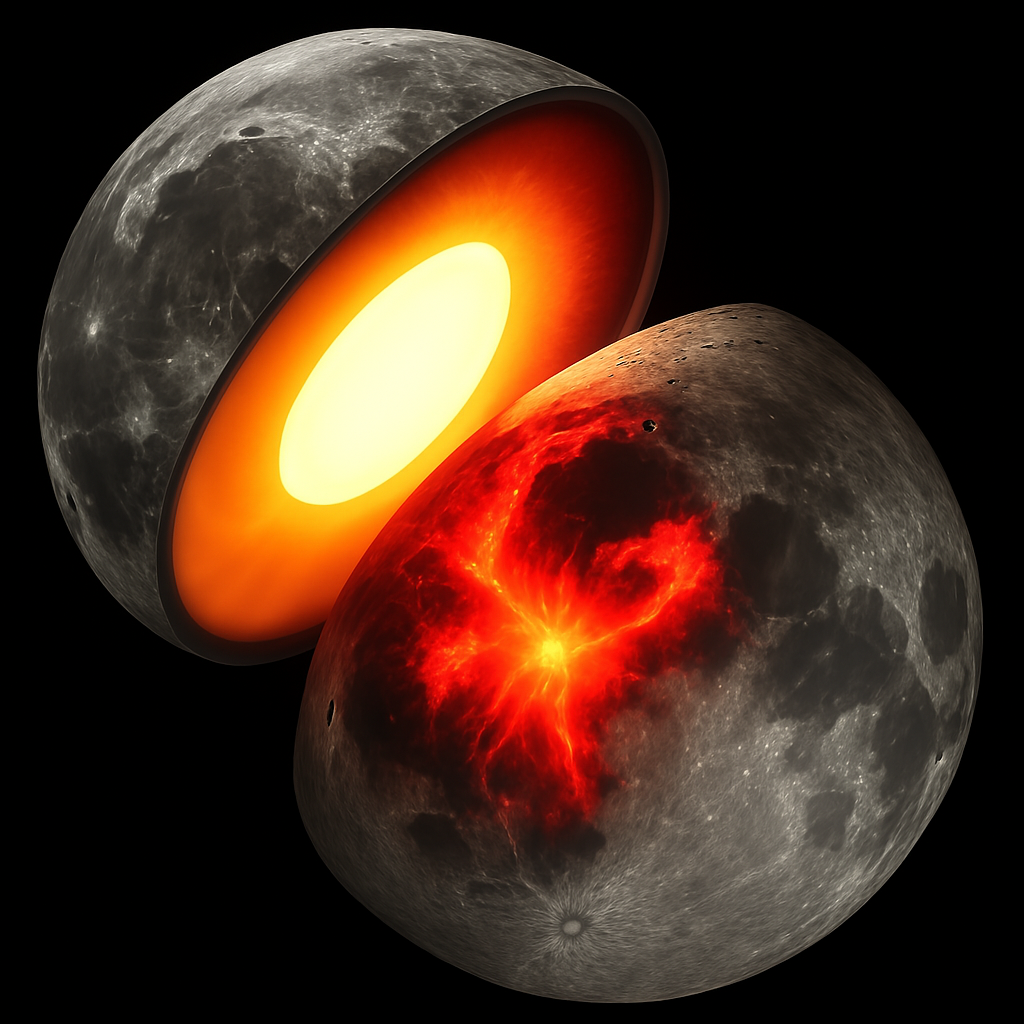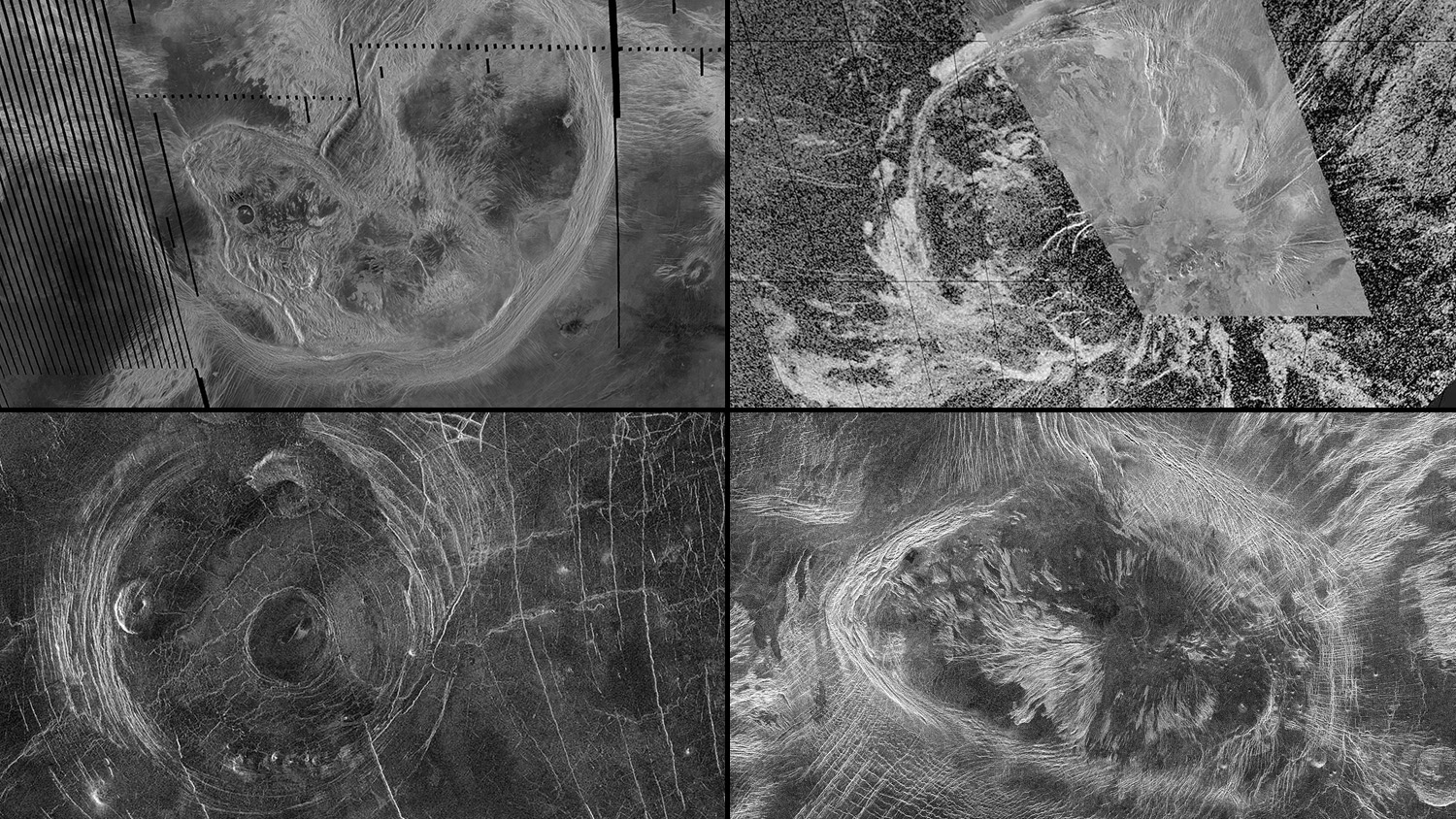2025-05-14 NASA

This artist’s concept shows the Moon’s hot interior and volcanism about 2 to 3 billion years ago. It is thought that volcanic activity on the lunar near side (the side facing Earth) helped create a landscape dominated by vast plains called mare, which are formed by molten rock that cooled and solidified. NASA/JPL-Caltech
<関連情報>
- https://www.nasa.gov/solar-system/asteroids/vesta/nasa-studies-reveal-hidden-secrets-about-interiors-of-moon-vesta/
- https://www.nature.com/articles/s41586-025-08949-5
- https://www.nature.com/articles/s41550-025-02533-7
月の潮汐応答から推測される月のマントルの熱的非対称性 Thermal asymmetry in the Moon’s mantle inferred from monthly tidal response
R. S. Park,A. Berne,A. S. Konopliv,J. T. Keane,I. Matsuyama,F. Nimmo,M. Rovira-Navarro,M. P. Panning,M. Simons,D. J. Stevenson & R. C. Weber
Nature Published:14 May 2025
DOI:https://doi.org/10.1038/s41586-025-08949-5
Abstract
The Moon undergoes periodic tidal forcing due to its eccentric and oblique orbit around the Earth1. The response to this tidal interaction drives temporal changes in the lunar gravity field and is sensitive to the satellite’s internal structure2,3,4. We use data from the NASA GRAIL spacecraft5,6,7,8,9 to recover the time-varying lunar gravity field, including a degree-3 gravitational tidal Love number, k3. Here, we report our estimated value of k3 = 0.0163 ± 0.0007, which is about 72% higher than that expected for a spherically symmetric moon10. Such a large k3 can be explained if the elastic shear modulus of the mantle varies by about 2–3% between the nearside and farside4, providing an observational demonstration of lateral heterogeneities in the deep lunar interior. This asymmetric structure suggests preservation of a predominantly thermal anomaly of roughly 100–200 K in the nearside mantle that formed surface mare regions 3–4 billion years ago11 and could influence the spatial distribution of deep moonquakes12.
ドーンの観測から推測されるベスタ星の小さな核 A small core in Vesta inferred from Dawn’s observations
R. S. Park,A. I. Ermakov,A. S. Konopliv,A. T. Vaughan,N. Rambaux,B. G. Bills,J. C. Castillo-Rogez,R. R. Fu,S. A. Jacobson,S. T. Stewart & M. J. Toplis
Nature Astronomy Published:23 April 2025
DOI:https://doi.org/10.1038/s41550-025-02533-7
Abstract
Vesta’s large-scale interior structure had previously been constrained primarily using the gravity and shape data from the Dawn mission. However, these data alone still allow a wide range of possibilities for the differentiation state of the body. The moment of inertia is arguably the most diagnostic parameter related to the radial density distribution of a planetary body, making it crucial for assessing the body’s state of internal differentiation. Determining the moment of inertia requires additional measurements of the amplitudes of small rotational motions, such as precession and nutation. Here we report an updated estimate of the moment of inertia of Vesta inferred from Dawn’s Doppler tracking via the Deep Space Network and onboard imaging data. The recovered value for Vesta’s normalized polar moment of inertia is C¯/MR2=0.4208±0.0047 (where M is the mass of Vesta and R is the reference radius), which is only 6.6% lower than the homogeneous value of 0.4505. This value, combined with the gravity field and global shape, suggests that Vesta’s interior has limited density stratification beneath its howardite–eucrite–diogenite-dominated crust. We propose two possible origin scenarios that are consistent with the observed constraints. In the first scenario, Vesta’s interior did not undergo full differentiation due to late accretion. In the second scenario, Vesta originated as an impact remnant of a larger differentiated body re-accreted with non-chondritic bulk composition produced from a catastrophic impact. Vesta did not experience complete differentiation in either scenario, suggesting that its current state reflects a complex interplay between its accretion timing, thermal evolution, redistribution of 26Al bearing melt and/or impact processes.



